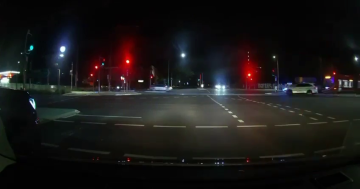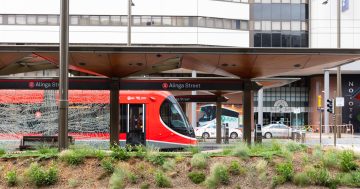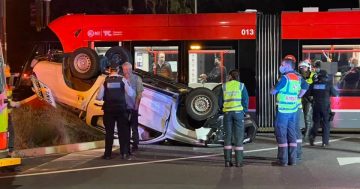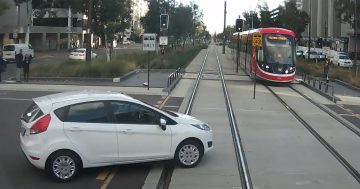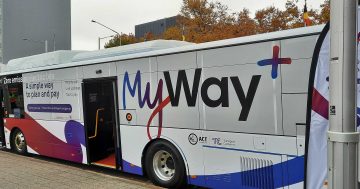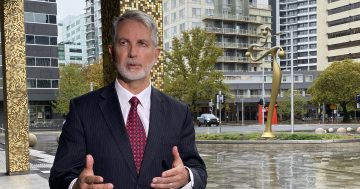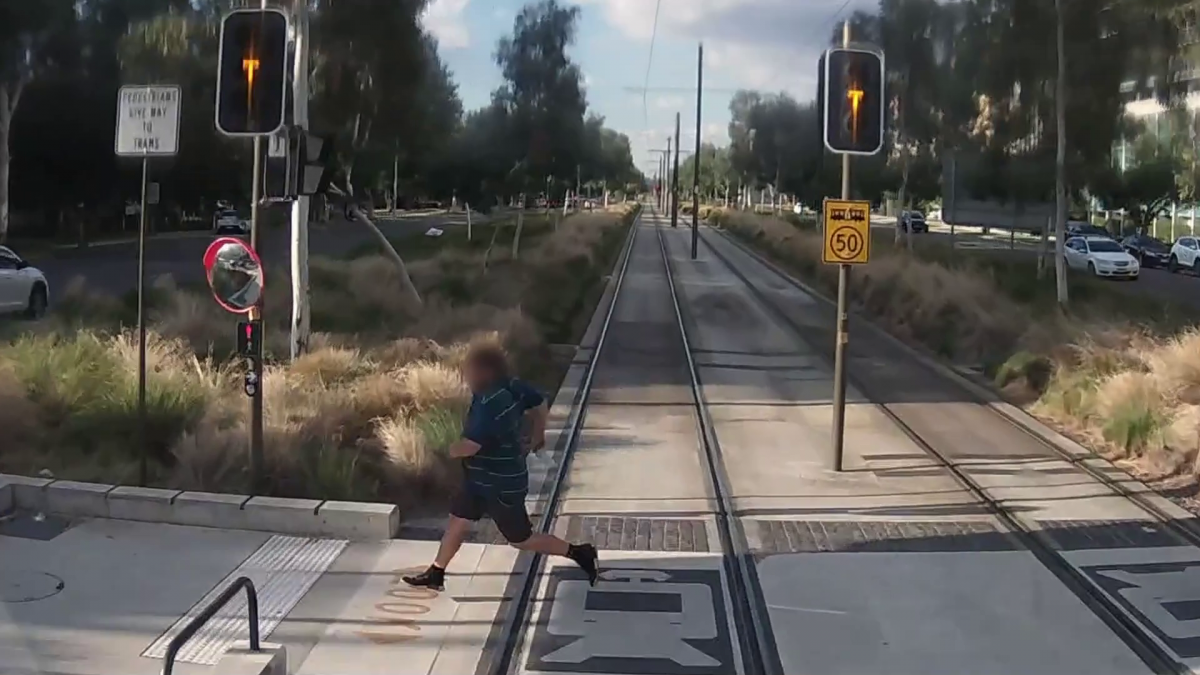
Canberra light rail drivers have used their emergency brakes 21 times since January to avoid accidents. Photo: ACT Police.
Canberra light rail drivers have been forced to use the emergency brake 21 times since 1 January 2023, averaging once every three days.
Drivers are trained to use the emergency brake, which automatically sounds a horn, as a last resort after using a cautionary bell and regular brake.
Canberra Metro Operations General Manager Bruno Lancelot said the trams do not have automatic braking and rely on the driver’s “line of sight”.
“If [trams are travelling] at about 70 km/h, which is the maximum speed [they] need around 60 metres to stop, which is double the length of a tram,” he said.
“And that’s why people need to be really, really careful when they cross in front of a tram, even if the tram is on the other side of the intersection.”
Light rail driver Matthew Vankerkoerle said looking out for people and cars increased his anxiety levels on the job.
“It can be quite scary when you use it [emergency brake], especially when a motor vehicle comes through a red light,” he said.
“Your first instinct is just to brake and avoid the motor vehicle as much as you can.”
Mr Lancelot said people on board could also fall and be injured when the trams come to a sudden stop.
Any incidents automatically trigger an investigation by Canberra Metro Operations, with assistance from the AFP and safety regulator.
“We try to always use the findings from the investigation to apply in our training practices but also … we share it with others,” said Mr Lancelot.
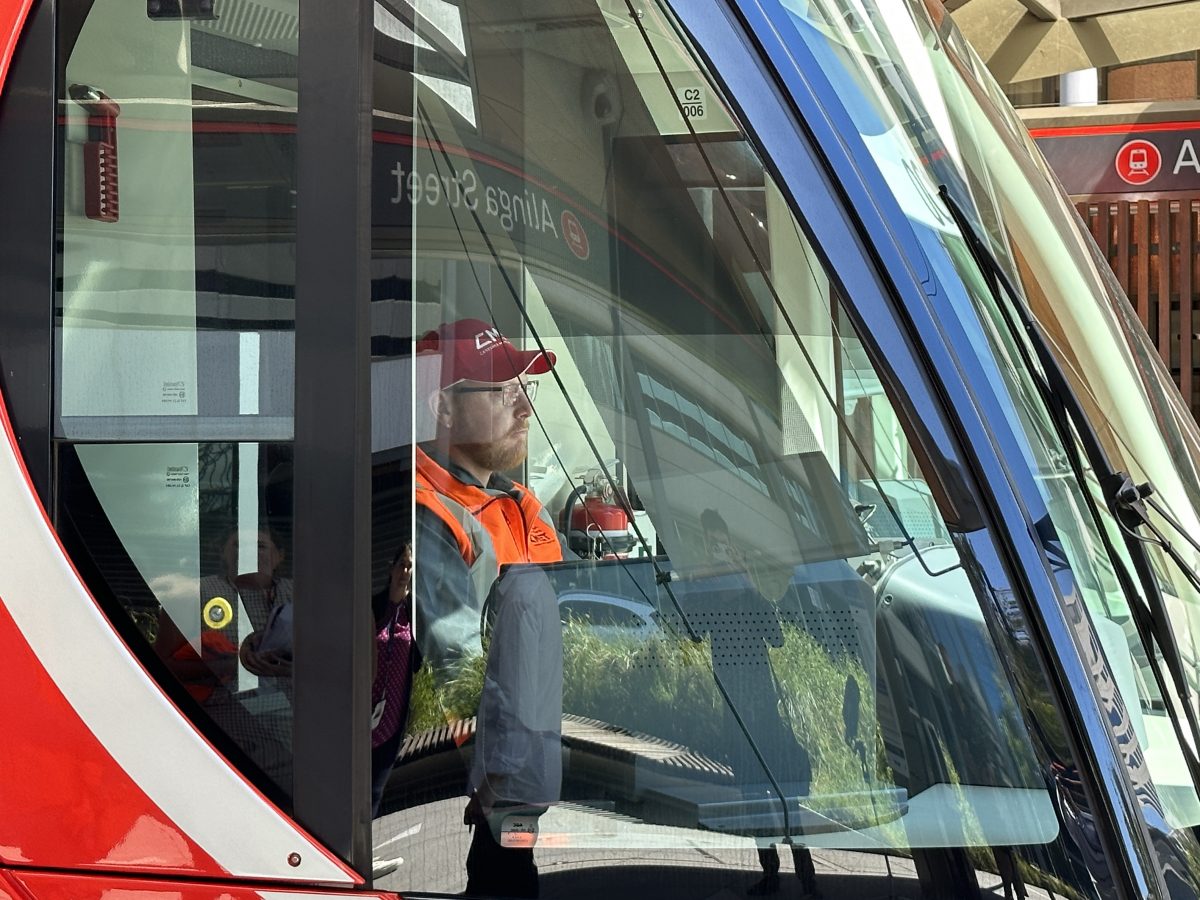
Matthew Vankerkoerle said being an ACT light rail driver can be “quite scary”. Photo: Travis Radford.
Mr Lancelot said the landscaping around the light rail and its quiet operation made it more dangerous for people unfamiliar with Canberra.
“People coming from interstate or other countries … potentially don’t look as carefully crossing the track as they would crossing the street,” he said.
ACT Road Policing Detective Inspector Paul Hutcheson said increasing police enforcement was not the whole answer.
“There are limited resources so increasing [police] presence is probably quite difficult,” he said.
“There are plenty of opportunities there [CCTV and light rail video] that if we need to take stronger enforcement options, we are considering that.
“You can’t go and fine your way into better road safety. [Police enforcement is] part of the solution, but it shouldn’t be the priority.”
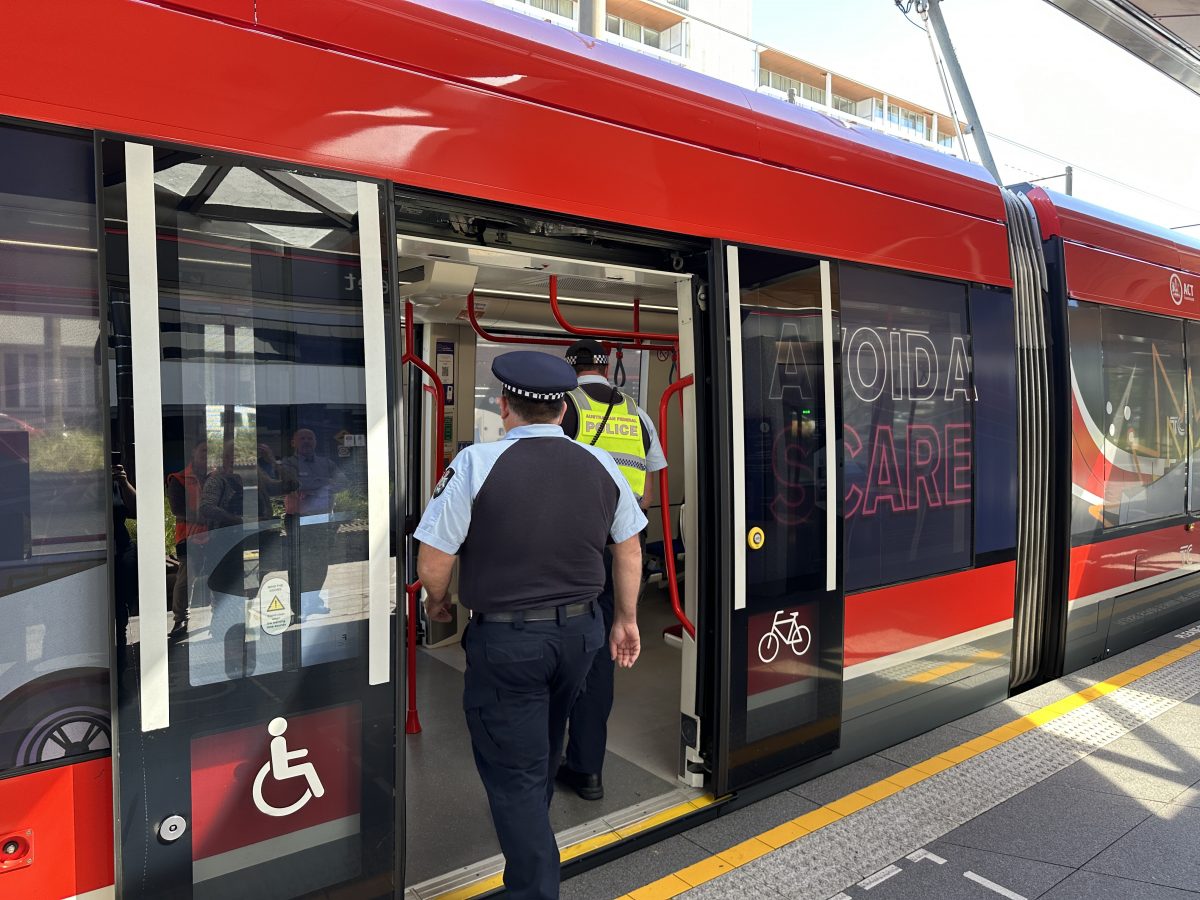
Detective Inspector Hutcheson (left) said additional police enforcement wouldn’t solve light rail safety problems alone. Photo: Travis Radford.
Detective Inspector Hutcheson said the latest safety campaign targeted the “one per cent” of irresponsible drivers and pedestrians.
“Take some time. Take your headphones off. Look up from your phone and do the old stop, look and listen before you cross,” he said.
“If you do that, it’s really, really simple not to be hit by a big metal train.”
He singled out noise-cancelling headphones as particularly dangerous for pedestrians.
“[They] take your attention away from being able to hear things that you can’t see,” he said.
“You need to be able to use all your senses to cross the road.”
Detective Inspector Hutcheson also reminded drivers that light rail vehicles have priority at intersections.
“If you obey all the traffic signals around the light rail, you will not be hit,” he said.












